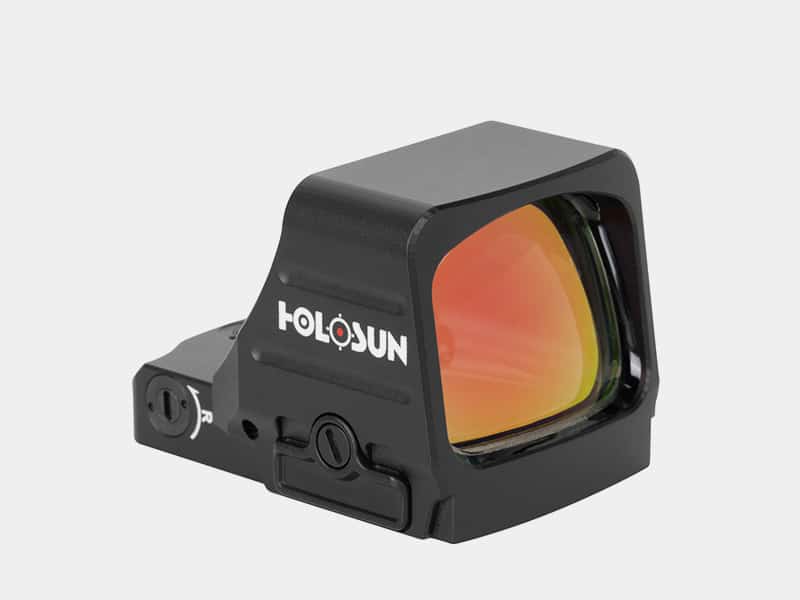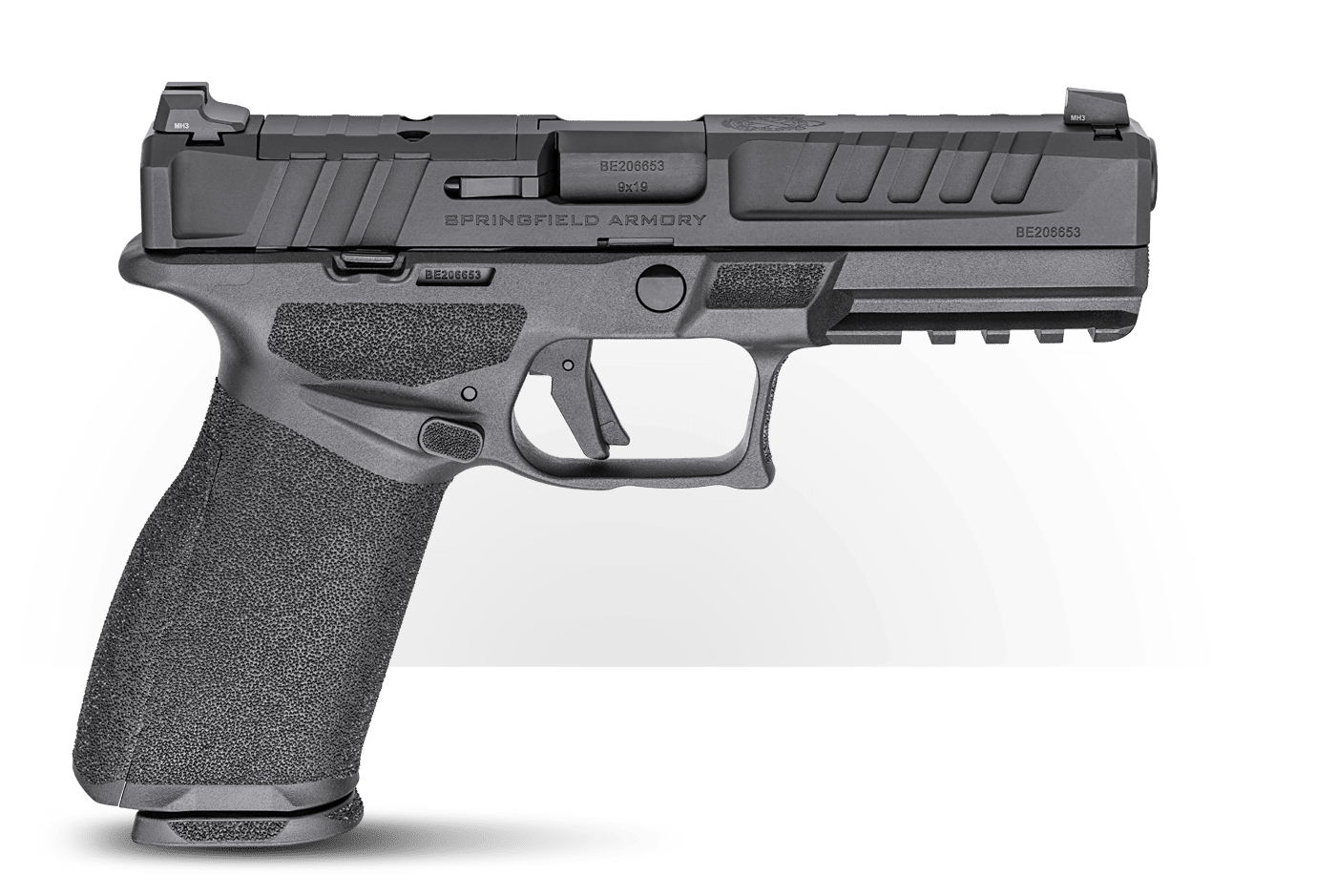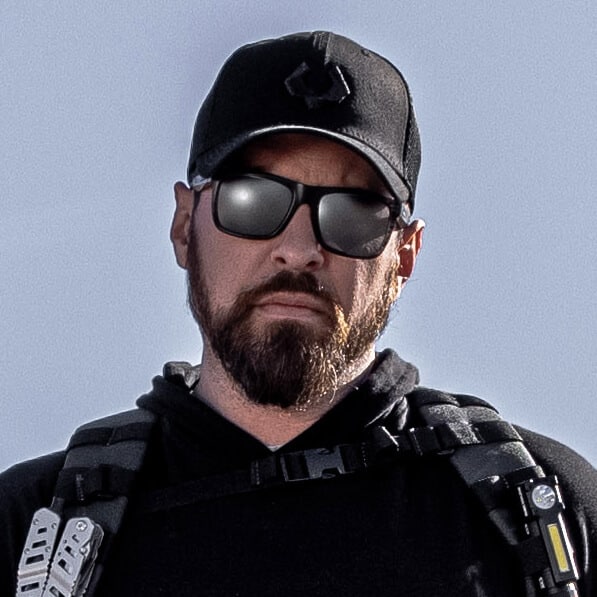Holosun 507Comp Red Dot Review
September 22nd, 2023
7 minute read
In today’s Holosun 507Comp review, Scott Conditt examines one of the newest products from an increasingly popular optics company. During the past 10 years, shooters have taken to Holosun for the company’s quality products and reasonable prices. This Holosun red dot offers an intriguing new feature for handgun competitive shooting as well as defensive use. How does this different reticle system measure up?
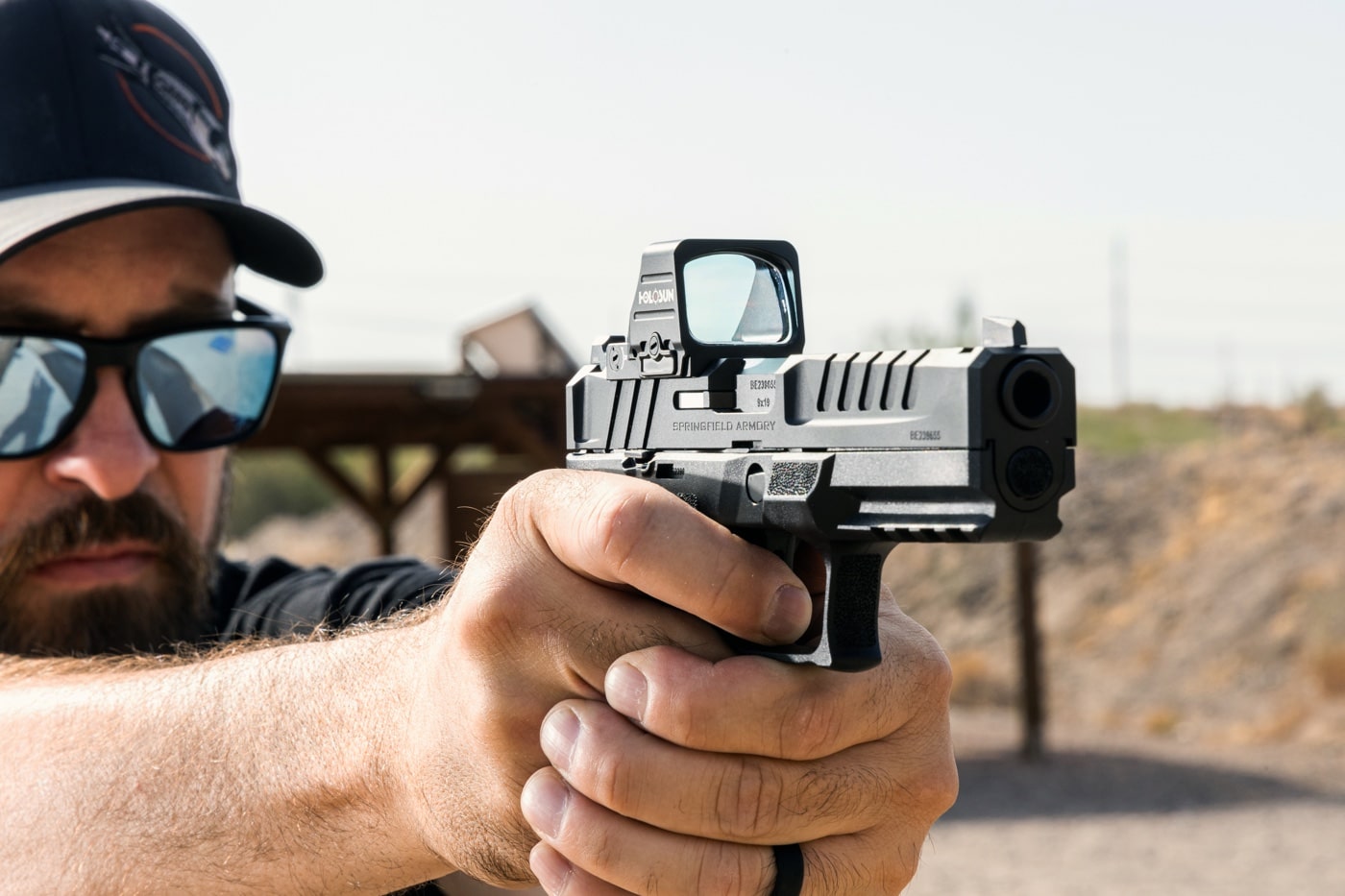
My favorite new pistol to run at the range is — hands down — the Echelon. The gun features some truly unique and unparalleled features, all under one roof. The Echelon runs beautifully, takes abuse like a champ, and has been making some huge waves in the polymer striker-fired arena for more reasons than I have room to extrapolate on in this article.
This article is about what I have found to be a nearly perfect pairing of pistol and reflex optic in my humble and personal experience.
[You can learn more about the Springfield Echelon in this article.]
Holosun 507Comp Details
I have been working with the Echelon for a few months now and have really enjoyed running it stock as it comes out of the box. For the model I received, I chose the tritium three-dot sights to be included.
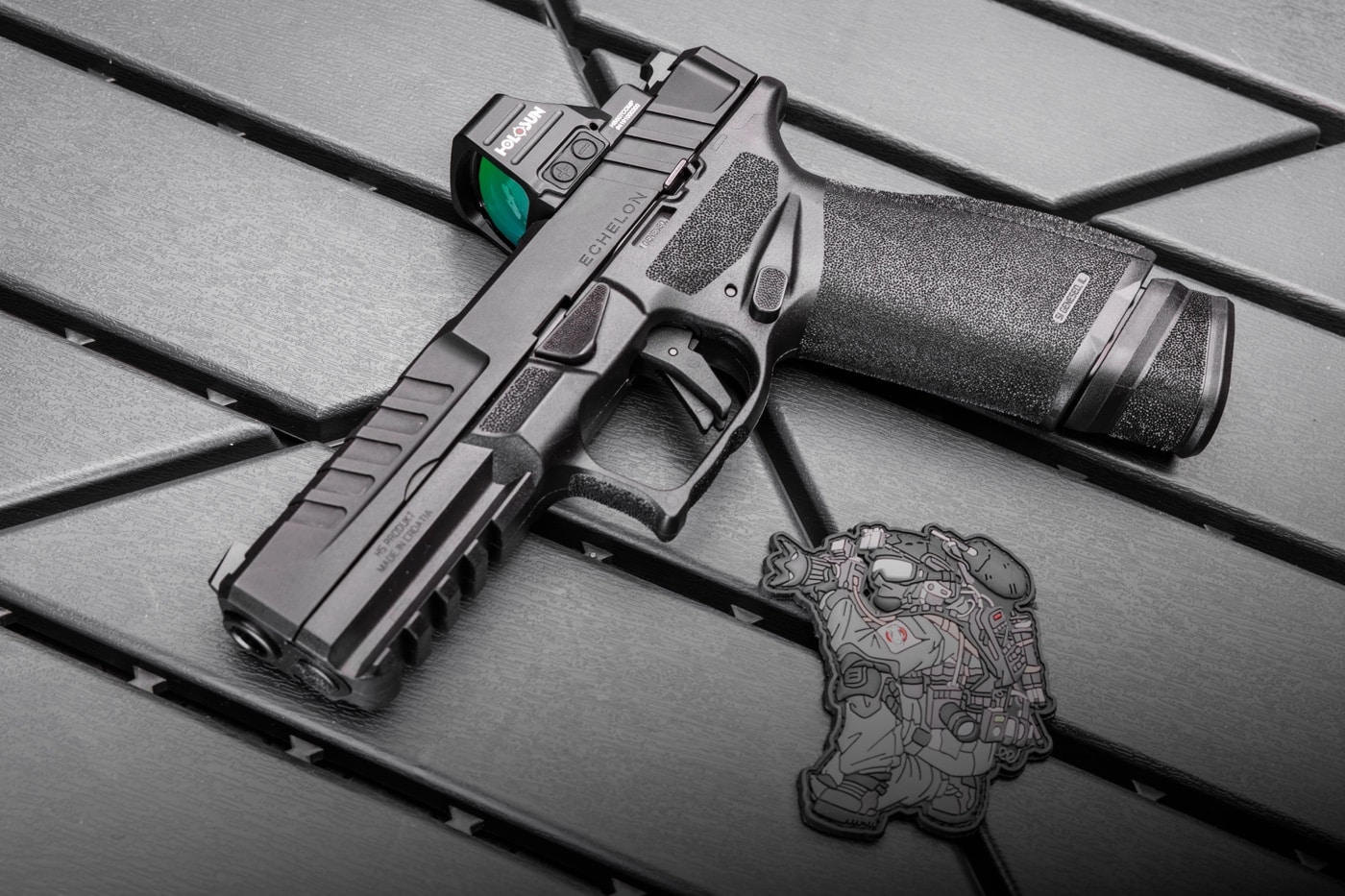
That being said, I have really wanted to run the Echelon with a reflex optic, in part because I was excited to test out how well the Echelon’s newfangled Variable Interface System mounting system worked. So, when I got my hands on a Holosun 507Comp, which I had initially got a sneak peek of during one of the industry trade shows, I immediately knew this was going to be the first optic I wanted to run on top of the Echelon.
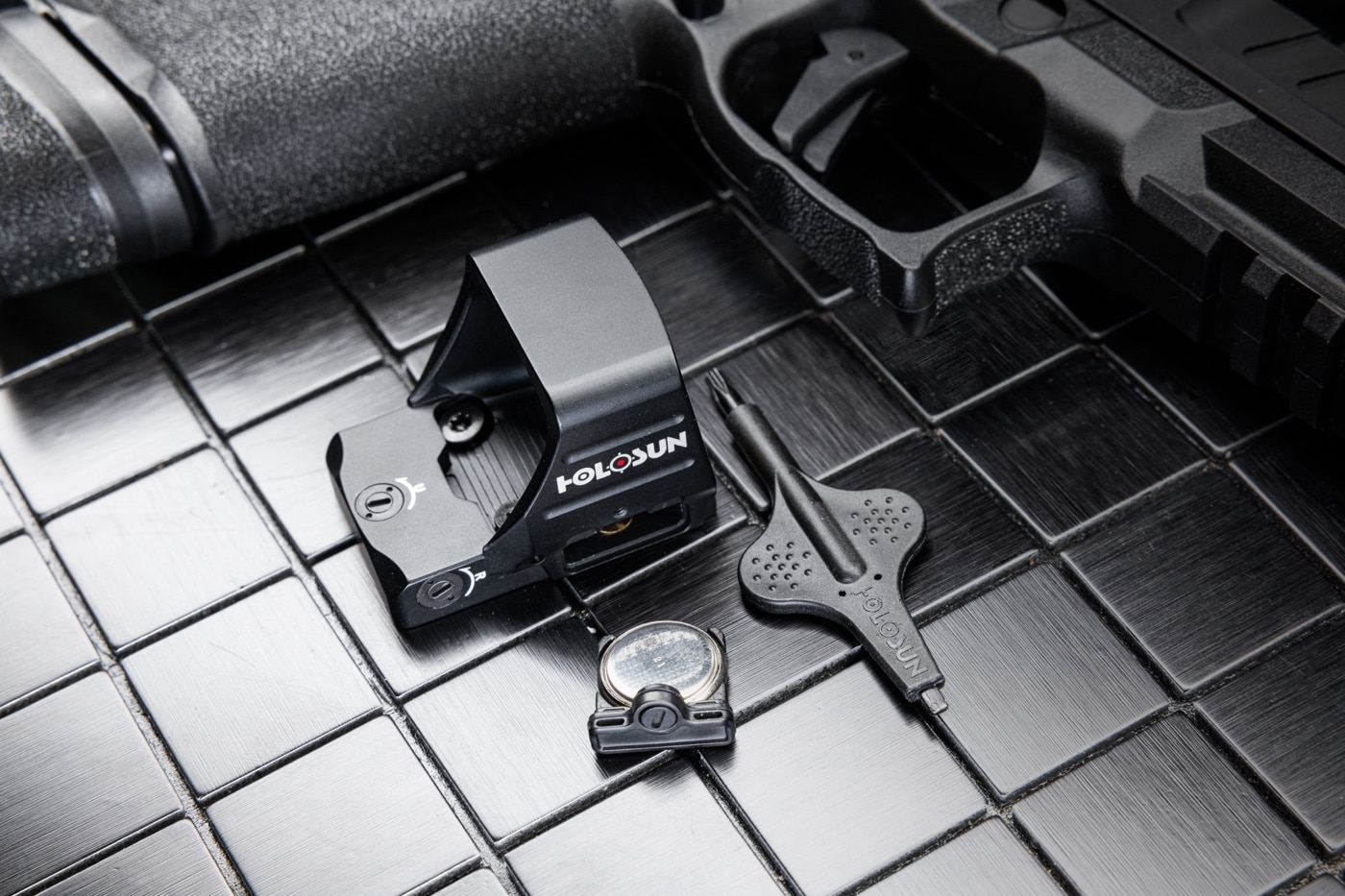
What really struck me about Holosun’s 507Comp was the extremely generous window and clarity when looking through it. The 1.1” x 0.87” objective lens provides a huge window size compared to many other reflex optics without feeling like you have a massive fixture on your rail.
CRS — Competition Reticle System
Holosun’s new Competition Reticle System (CRS) was something I was also very impressed by. Offered with a red or green dot, the CRS is a multi-sighting system with four variations on the reticle, including a precision 2 MOA dot, an 8 MOA circle, 20 MOA circle and 32 MOA circle with multiple combination settings to satisfy your preference.
[Be sure to read What’s the Best Reflex Sight Dot Color?]
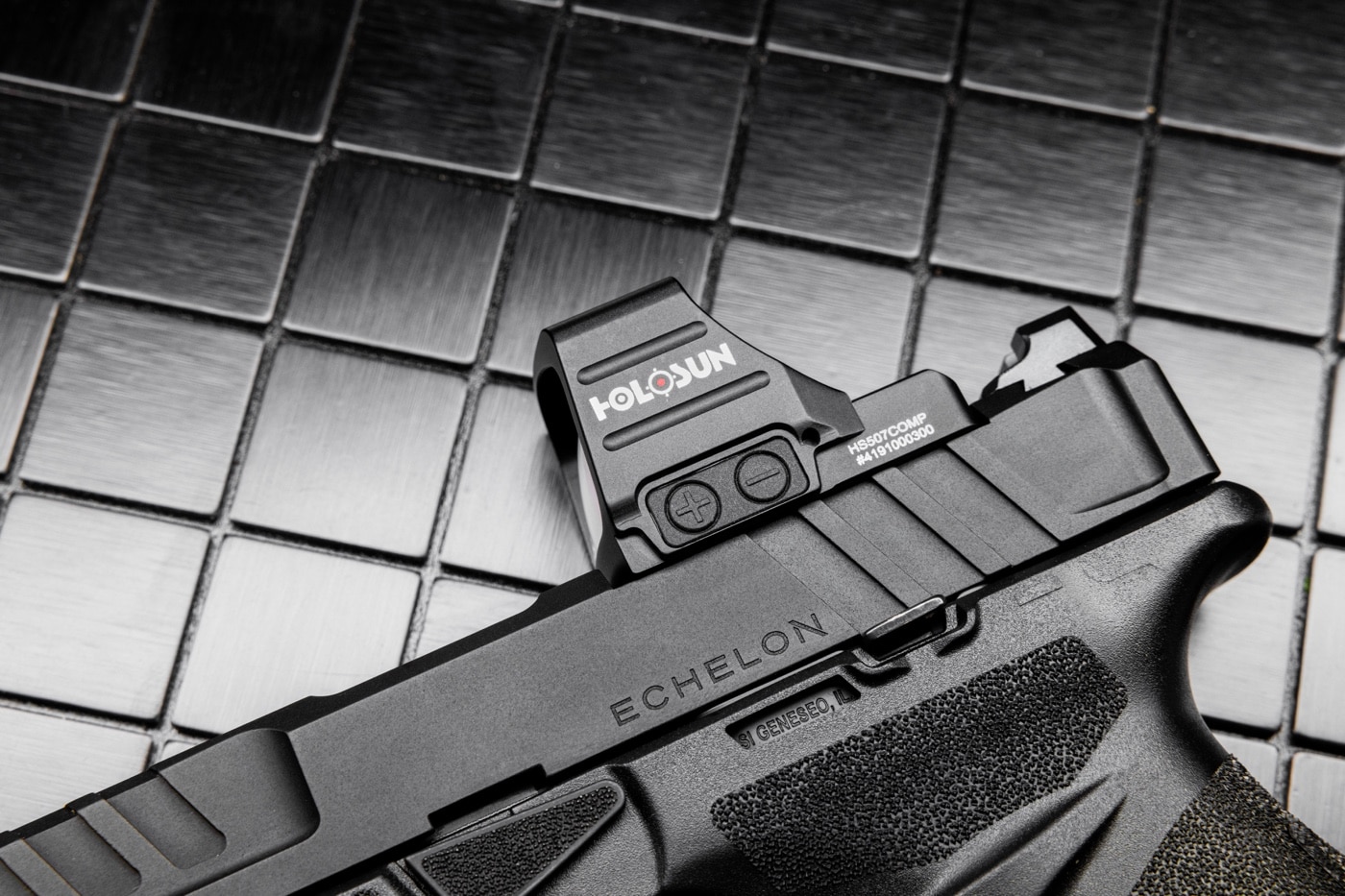
These were the two standout features that really caught my attention — a huge, crystal clear, parallax-free, multi-coated window — a larger window than most — and some very compelling new reticle options with a wide degree of choice between them. Digging into the basic specifications and features of this unit, the 507Comp is also manufactured using durable 7075 T6 aluminum, uses an industry-standard footprint, and includes Shake Awake technology.
This red dot unit utilizes a CR1632 battery that provides 50,000 hours of life, offers eight daylight and two night vision brightness settings, and it has an IP67 submersion rating. Speaking of battery life, I really like that the engineering team put the battery tray on the side of this unit so I don’t have to take it off of the rail each time I want to swap out the battery. Adjustment buttons for brightness levels are placed on the side of the unit and are very responsive and easy to actuate.
Hands-On with the Red Dot Sight
Mounting the 507Comp red dot optic to the Echelon was an absolute breeze. I utilized the included screws that came with the Holosun optic and mounted it directly to the Echelon’s rail after removing the slide cover plate. That was it. No adapter plates are required. That’s the beauty of the Variable Interface System system. You can mount over 30 optics directly to the rail without requiring any additional special adapters.
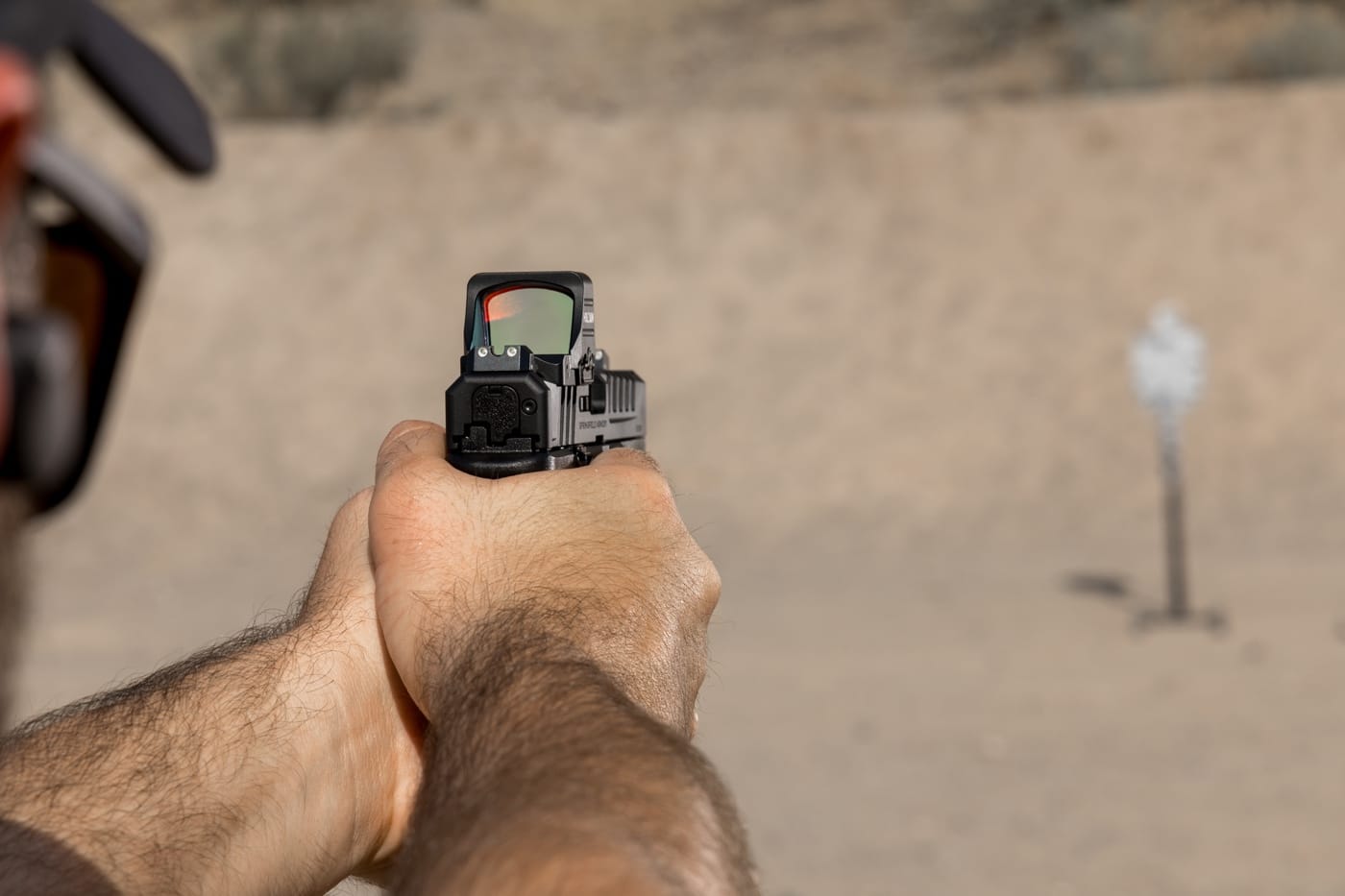
Then it was time to hit the range and see how the Echelon and 507Comp package performed together. Because the 507Comp mounted directly to the slide and sat perfectly low on the frame, I was able to co-witness my tritium three-dot sights in alignment with the reticle I chose to run first, the 2 MOA dot with 8 MOA circle.
After adjusting the windage and elevation to align with my irons, I took stock of how bright and extremely crisp the reticle appeared through the large window. The reticle showed no sign of latency “flicker” or any apparent distortion, and the 2 MOA dot combined with the 8 MOA ring was really nice.
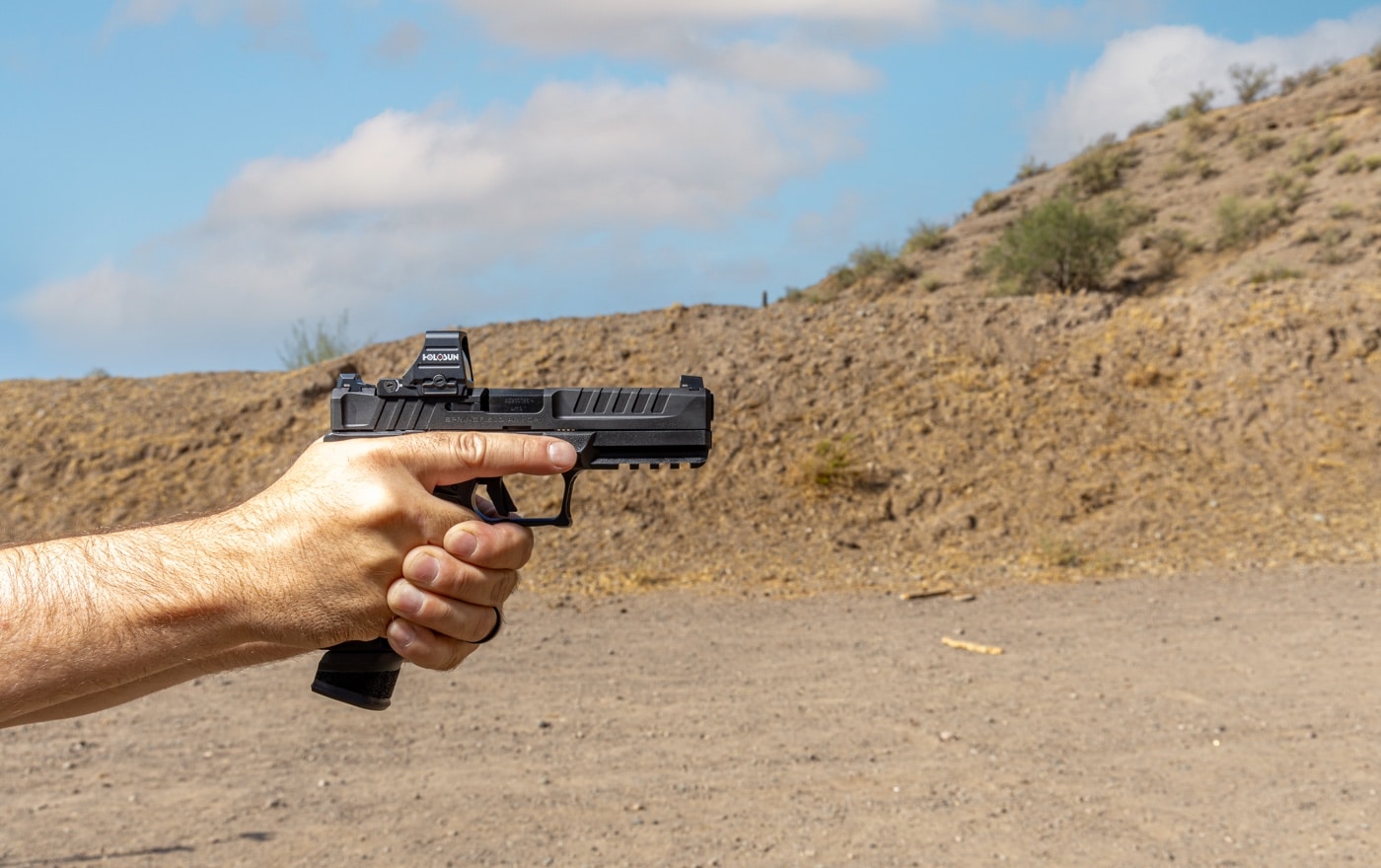
Another good test in an outdoor range environment, particularly in the bright desert of Arizona, is how well the brightness settings operate. I was pleased to find that the brightness settings exceeded all expectations, with no wash-out and plenty of latitude with brightness to spare as I placed the reticle against sandy-colored berms in the scorching morning sun.
Stepping to the firing line, I placed initial rounds slow and steady just to test the zero and see how it would hold. A minor adjustment to my alignment, and the zero and hold were both rock solid. Then I performed rapid successions of shot placements from about 15 yards out on paper.
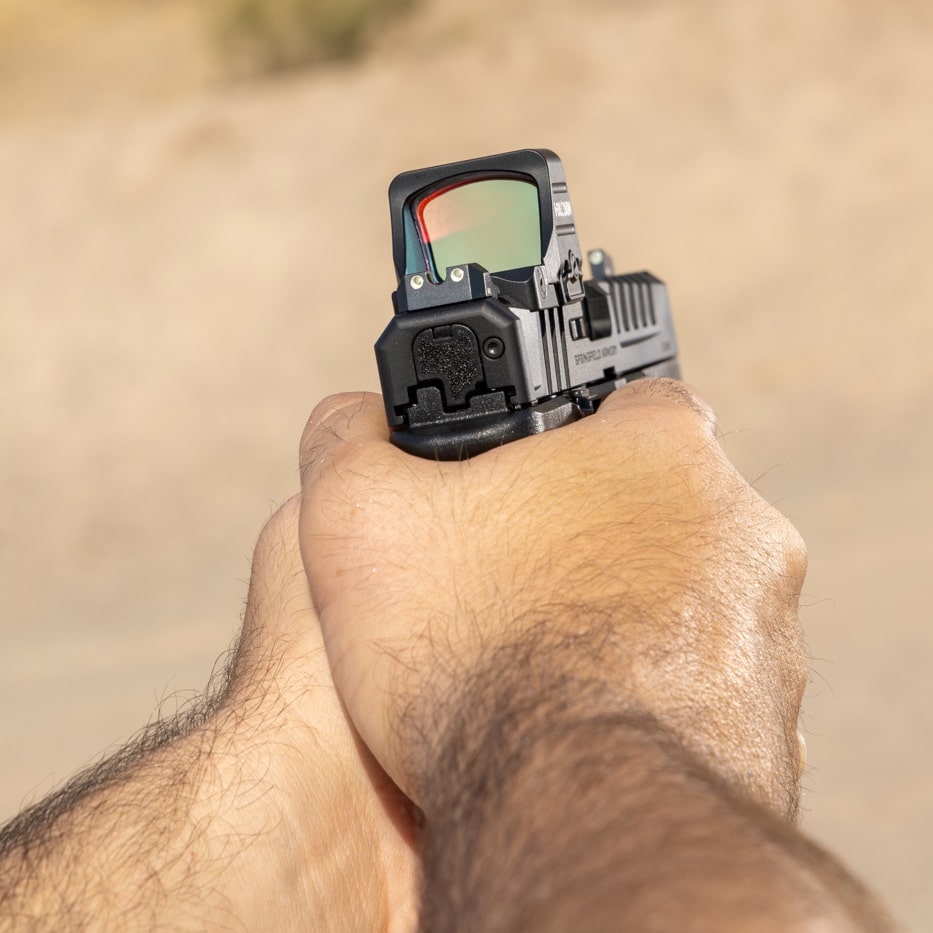
What I found was that I was able to very comfortably use the 8 MOA dot as a good gauge and reference when zoning back in to quickly place my follow-up shots. The single dot alone has been a favorite go-to for me in the last year, but I was pleasantly surprised to see how the dot combined with the 8 MOA ring performed. Especially with the huge sight picture through the glass, it was comfortable, quick, and easy to pick back up on the reticle.
I switched the reticle system over to the 20 MOA circle and had a similar experience. From a completely personal and subjective shooting experience, I preferred the 8 MOA ring in conjunction with the dot out of the available combinations of reticles. I very much liked being able to track the larger outer reticle ring as recoil was occurring and how it aided my vision to bring that center dot back on target before firing again. The 20 MOA ring was also a benefit in this way and it was easy to track the whole reticle system within the large window during cycling.
It was almost a toss-up between the 8 and 20 MOA circles for me, but after some time spent between them all, I really enjoyed the 8 MOA the most out of the available options. The 32 MOA circle wasn’t bad by any means, and I can see how a good percentage of shooters will love that option, it just didn’t feel as intuitive for me.
Final Thoughts on the 507Comp Reflex Sight
I put around 250 rounds through the gun at varying distances, ranging from 15 yards all the way out to 50 just to see how I was performing with the new combination. The bottom line: the 507Comp held zero and, when paired with the Echelon it makes for a hell of a combination. The performance of the pistol has been beyond expectations, and I can soundly say the same for the Holosun 507Comp as well.
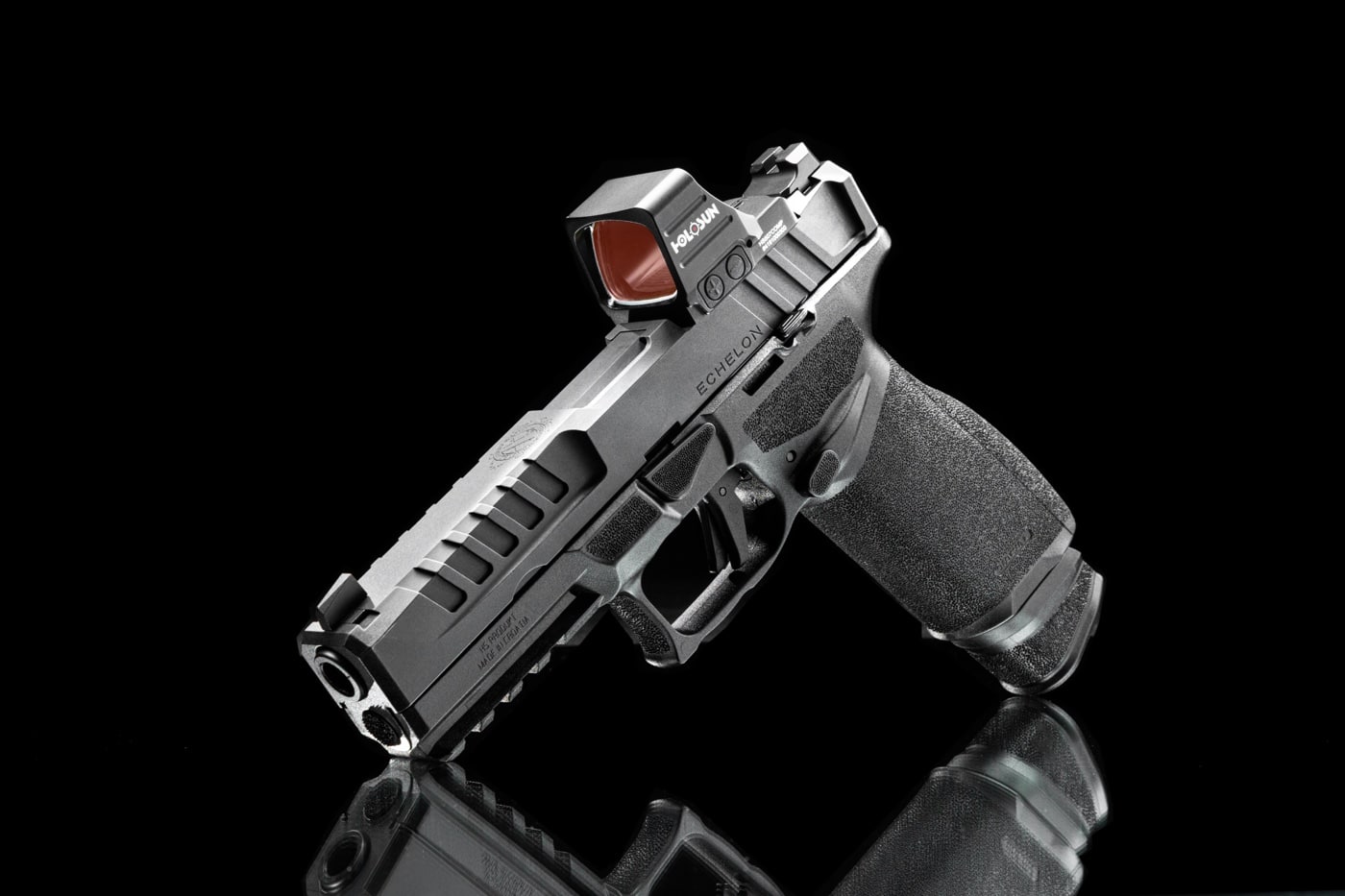
I am looking forward to putting both through some extensive use and a bit of rough usage over the next many months and look forward to following up after I have had the chance to run both over a greater timeline. But for now, I am really enjoying this pairing and would urge Echelon owners to give the 507Comp a try for themselves.
The MSRP for the red reticle unit is $435, while the green comes in at $470. This puts these units as the most expensive of the company’s 507 line of optics. However, it is still substantially cheaper than other high-end firearm optics like the Trijicon SRO and RMR.
Editor’s Note: Be sure to check out The Armory Life Forum, where you can comment about our daily articles, as well as just talk guns and gear. Click the “Go To Forum Thread” link below to jump in!
Join the Discussion
Featured in this article
Continue Reading
Did you enjoy this article?

 62
62




